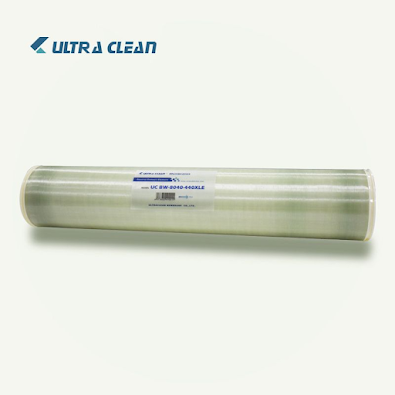What are Reverse Osmosis Membrane Elements used for?
Access to clean and safe drinking water is a fundamental human right. Unfortunately, not everyone has access to clean water, and this is becoming a more pressing issue as the world population grows and water resources become increasingly scarce. This is where reverse osmosis membrane elements come in, providing a crucial technology for producing high-quality drinking water from various sources.
Reverse osmosis (RO) is a water treatment technology that uses a semipermeable membrane to remove impurities and contaminants from water. The RO process works by applying pressure to force water through the membrane, which allows water molecules to pass through while blocking larger molecules, such as salts, minerals, and other contaminants.
The membrane element is the key component of the RO system, and its performance determines the quality and quantity of water produced. Reverse osmosis membrane elements consist of thin layers of polymer material, typically made of polyamide or polysulfone, that are tightly wound around a central perforated tube. These layers are only a few microns thick, making the membrane element a highly efficient filtration medium.
Reverse osmosis membrane elements are available in different configurations and sizes, each designed for specific applications. For example, some membrane elements are optimized for seawater desalination, while others are designed for brackish water treatment or industrial wastewater treatment.
The performance of a reverse osmosis membrane element is determined by several factors, including the membrane material, the membrane thickness, the membrane area, and the water flow rate. Membrane materials have improved significantly over the years, with newer materials offering higher salt rejection rates, better resistance to fouling and scaling, and longer lifespan.
One of the most critical factors affecting membrane performance is fouling. Fouling occurs when contaminants, such as minerals, bacteria, and organic matter, accumulate on the membrane surface, reducing its effectiveness. Fouling can significantly impact water quality, reduce the lifespan of the membrane, and increase operating costs.
To mitigate fouling, various strategies are used, including chemical cleaning, physical cleaning, and backwashing. Chemical cleaning involves using chemicals, such as acids and alkalis, to dissolve or dislodge contaminants from the membrane surface. Physical cleaning involves using mechanical methods, such as scrubbing or brushing, to remove contaminants. Backwashing involves reversing the flow of water through the membrane, which helps dislodge and remove accumulated contaminants.
In addition to fouling, membrane elements can also be affected by scaling, which occurs when minerals, such as calcium and magnesium, precipitate out of the water and form a layer on the membrane surface. Scaling can reduce the water flow rate and increase the pressure required to operate the RO system. To prevent scaling, various approaches are used, including pH adjustment, antiscalant chemicals, and periodic membrane cleaning.
Reverse osmosis membrane elements have revolutionized the water treatment industry, making it possible to produce high-quality drinking water from a variety of sources. RO Membrane systems are widely used in households, industries, and municipalities worldwide, providing safe and reliable access to clean water.
In conclusion, reverse osmosis membrane elements are a critical component of RO systems, providing an efficient and reliable method for removing contaminants and impurities from water. With continued improvements in membrane materials, design, and maintenance strategies, RO systems are becoming increasingly efficient, reliable, and cost-effective. As the demand for clean water continues to grow, reverse osmosis membrane elements will play a vital role in ensuring that everyone has access to safe and clean drinking water.


评论
发表评论